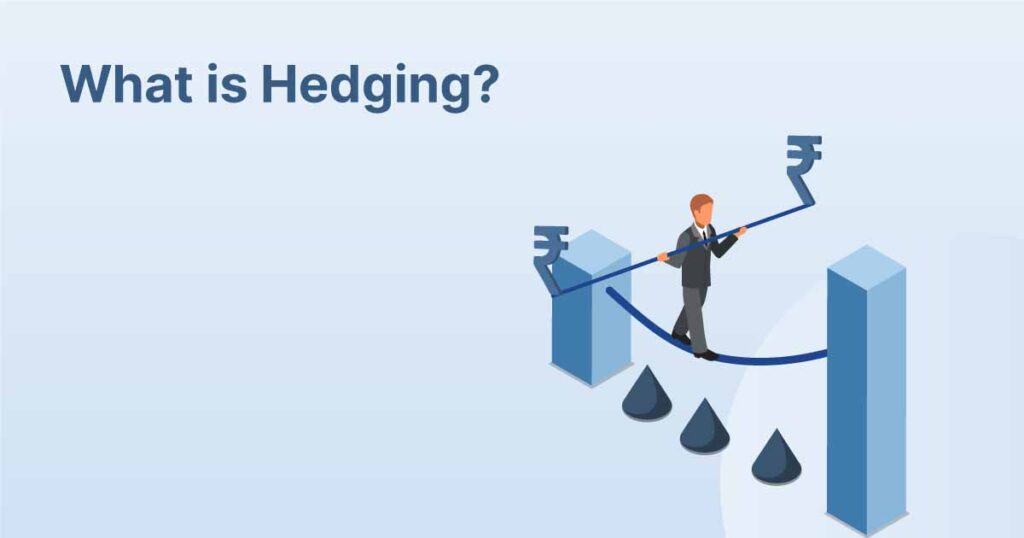In the volatile world of foreign exchange (forex), currency value fluctuations can significantly impact an investor’s portfolio. Forex hedging is a strategic approach to protect against unwanted movements in the forex market. It involves taking positions or using financial instruments to offset potential losses.
Understanding Forex Hedging


Forex hedging is essentially the practice of securing protection against financial losses due to currency risk. This can involve various strategies, including direct and complex hedging, using derivatives like options and futures, and leveraging forward contracts.
Benefits of Forex Hedging
The primary advantage of forex hedging is risk mitigation. It allows traders and businesses to plan their financial affairs with greater certainty, protecting against adverse currency movements. While it may limit some upside potential, the main aim is securing stable and predictable financial outcomes.
Forex Hedging Strategies
- Direct Hedging: This simple strategy involves opening opposite positions on the same currency pair. If the pair moves in one direction, the loss on one position is offset by the gain on the other.
- Options Trading: Forex options give the holder the right, but not the obligation, to buy or sell a currency pair at a specific price on a certain date. This can protect against unfavorable movements while allowing participation in favorable ones.
- Futures Contracts: Similar to options, futures obligate the holder to buy or sell a currency pair at a predetermined price, offering another layer of protection against volatility.
- Complex Hedging: More sophisticated strategies might involve multiple currencies or instruments, designed to protect against a broader range of outcomes.
Risks and Considerations of Forex Hedging
When delving into the world of forex hedging, it’s crucial to be aware of the inherent risks and considerations that come with attempting to protect your investments from currency fluctuations. While forex hedging can be a powerful tool in a trader’s arsenal, it’s not without its potential pitfalls. Understanding these risks is vital for anyone looking to implement hedging strategies effectively.
Cost Implications
One of the primary considerations when engaging in forex hedging is the cost associated with executing these strategies. Whether it’s the spread costs in direct hedging, premiums paid on options, or the margin requirements for futures contracts, each hedging strategy comes with its own set of costs that can eat into potential profits. Traders need to weigh these costs against the potential benefits of hedging to determine if the strategy is cost-effective for their situation.
Over-Hedging
Over-hedging occurs when the protection secured through hedging exceeds the actual risk exposure. This can lead to situations where the costs of hedging outweigh the benefits, essentially locking in a loss rather than protecting against a potential one. Traders must carefully calibrate their hedging strategies to match their actual exposure to currency risk, ensuring they don’t inadvertently negate the potential advantages of hedging.
Complexity and Mismanagement
Forex hedging can involve complex strategies that require a deep understanding of the forex market and the instruments used for hedging. The complexity of these strategies can lead to mismanagement, especially for those who are less experienced in forex trading. Misjudging the market direction, improperly timing the execution of hedging instruments, or failing to adjust strategies in response to market changes can all lead to significant losses.
Market Liquidity and Slippage
Market liquidity is another risk factor in forex hedging. In highly volatile market conditions or during off-market hours, liquidity can decrease, leading to slippage where the execution price of a hedging instrument differs from the expected price. This slippage can impact the effectiveness of the hedge, potentially leaving traders more exposed to currency risk than anticipated.
Regulatory and Legal Considerations
Forex markets are subject to varying degrees of regulation in different jurisdictions, and the legal framework governing the use of certain hedging instruments can change. Traders need to be aware of the regulatory environment in which they are operating and any legal restrictions or requirements related to forex hedging. Failure to comply with relevant laws and regulations can result in legal issues and financial penalties.
Counterparty Risk
When using derivatives like options and futures for hedging, there’s an inherent counterparty risk involved. This risk is the possibility that the other party in the contract will default on their obligations. While this risk is generally low when dealing with reputable and regulated financial institutions, it’s still a factor to consider, especially in tumultuous market conditions.
Implementing a Forex Hedging Strategy


Successful implementation starts with a clear understanding of one’s currency exposure and a comprehensive analysis of the market and potential hedging instruments. Continuous monitoring and adjustments are crucial, as the forex market’s dynamics can change rapidly.
Case Studies: Successful Forex Hedging
Exploring real-world case studies can provide valuable insights. For instance, a multinational corporation using forward contracts to stabilize operating costs, or a forex trader using options to hedge against a major economic announcement.
FAQs
- What is the primary purpose of forex hedging?
- To protect against currency risk and stabilize financial outcomes.
- Can forex hedging guarantee profits?
- No, its main goal is to protect against losses, not necessarily to generate profits.
- What are the common instruments used in forex hedging?
- Options, futures, forwards, and direct positions in the forex market.
- Is forex hedging suitable for all traders?
- It depends on the trader’s risk tolerance, investment goals, and understanding of the forex market.
- How does one start with forex hedging?
- By analyzing their currency exposure, understanding the available strategies, and perhaps consulting with a financial advisor.
For my contact:
You should first send me a friend request on MQL5, this will make it easier for me to connect and best support you with technical issues: https://www.mql5.com/en/users/tuanthang
– Join our Telegram Channel for new updating: https://t.me/forexeatradingchannel
– Recommended ECN Broker for EA – Tickmill: https://bit.ly/AdvancedTickmill
– Recommended Cent/Micro Account Broker for EA – Roboforex: https://bit.ly/AdvancedRoboforex
– To use an EA you need a VPS. Recommended VPS for EA
– Chocoping: https://bit.ly/AdvancedVPS. When you open the account type in the discount code to get 10% off: THANGEA10
– If you want to ask me any question or join our private group chat for traders. Please contact me through Telegram: https://t.me/thangforex







